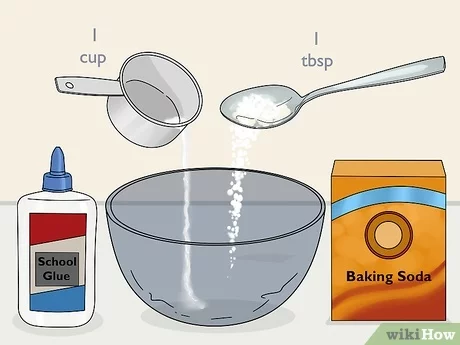How to Make Slime Without Activator: A Comprehensive Guide
Slime has become a popular DIY project, especially among children and teenagers. While traditional slime recipes often call for a specific activator, such as borax or contact lens solution, it is possible to create slime without using these ingredients. In this comprehensive guide, we will explore various methods for making slime without an activator, the science behind it, and the benefits of using alternative ingredients.
1. Understanding the Science of Slime
Slime is a non-Newtonian fluid, meaning it exhibits both liquid and solid properties. When force is applied, it behaves like a solid, but when left alone, it flows like a liquid. The key to creating slime is to form cross-links between polymer chains, which give the slime its unique texture and properties.In traditional slime recipes, the activator helps create these cross-links by altering the pH of the mixture. However, it is possible to achieve similar results using alternative ingredients that can modify the viscosity and elasticity of the slime.
2. Ingredients for Making Slime Without Activator
To make slime without an activator, you will need the following ingredients:
- Glue: White glue or clear glue is the base of the slime. It provides the polymer chains that form the cross-links.
- Liquid Starch: While not an activator, liquid starch can help create cross-links between the polymer chains, resulting in a slime-like texture.
- Baking Soda: Baking soda can be used to adjust the pH of the mixture, which can affect the slime’s texture and consistency.
- Contact Lens Solution: Although not an activator, contact lens solution can help thicken the slime and make it more stretchy.
- Lotion: Lotion can add moisture to the slime and make it more pliable.
- Food Coloring (optional): Food coloring can be added to create colorful slime.
- Glitter or other add-ins (optional): Glitter or other small objects can be added for extra texture and visual appeal.
3. Methods for Making Slime Without Activator
Here are two methods for making slime without an activator:
3.1 Method 1: Using Liquid Starch and Baking Soda
- In a bowl, mix together 1/2 cup of white glue or clear glue with 1/2 cup of liquid starch.
- Add 1-2 tablespoons of baking soda and mix well.
- Knead the mixture with your hands until it forms a slime-like consistency.
- If the slime is too sticky, add more liquid starch. If it’s too thick, add more glue.
- Optional: Add food coloring or glitter for extra fun.
3.2 Method 2: Using Contact Lens Solution and Lotion
- In a bowl, mix together 1/2 cup of white glue or clear glue with 1-2 tablespoons of contact lens solution.
- Add 1-2 tablespoons of lotion and mix well.
- Knead the mixture with your hands until it forms a slime-like consistency.
- If the slime is too sticky, add more contact lens solution. If it’s too thick, add more glue or lotion.
- Optional: Add food coloring or glitter for extra fun.
4. Troubleshooting and Tips
- If the slime is too sticky, add more liquid starch, contact lens solution, or baking soda.
- If the slime is too thick, add more glue or lotion.
- Store the slime in an airtight container to prevent it from drying out.
- Avoid adding too much food coloring, as it can stain hands and surfaces.
- Supervise children when making slime to ensure they don’t ingest any of the ingredients.
5. Benefits of Making Slime Without Activator
Making slime without an activator offers several benefits:
- Cost-effective: Using alternative ingredients can be more cost-effective than purchasing a specific activator.
- Safer: Avoiding ingredients like borax can make the slime-making process safer, especially for younger children.
- Customizable: You can experiment with different ingredients to create unique textures and consistencies.
- Educational: Making slime can be a fun and educational activity that teaches children about the properties of non-Newtonian fluids and the science behind it.
6. Frequently Asked Questions (FAQ)
What is the best glue to use for making slime?
White glue or clear glue works best for making slime. Avoid using glue sticks or hot glue.
Can I use baking powder instead of baking soda?
No, baking powder will not work the same way as baking soda in slime recipes. Baking soda helps adjust the pH of the mixture.
How long does homemade slime last?
Properly stored slime can last for several weeks. Store it in an airtight container to prevent it from drying out.
Is homemade slime safe for children?
Homemade slime is generally safe for children when made with non-toxic ingredients and under adult supervision. However, it’s essential to ensure that children don’t ingest any of the ingredients.
Can I add scents to my slime?
Yes, you can add a few drops of essential oils or extracts to your slime to give it a pleasant scent.
7. Conclusion
Making slime without an activator is a fun and cost-effective way to create this popular DIY project. By using alternative ingredients like liquid starch, contact lens solution, and lotion, you can achieve similar results to traditional slime recipes. Remember to experiment with different ingredients and proportions to find the perfect consistency for your slime. Most importantly, have fun and be creative!
Relevant Information
| Topic | Link |
|---|---|
| Non-Newtonian Fluids | Wikipedia article on Non-Newtonian Fluids |



